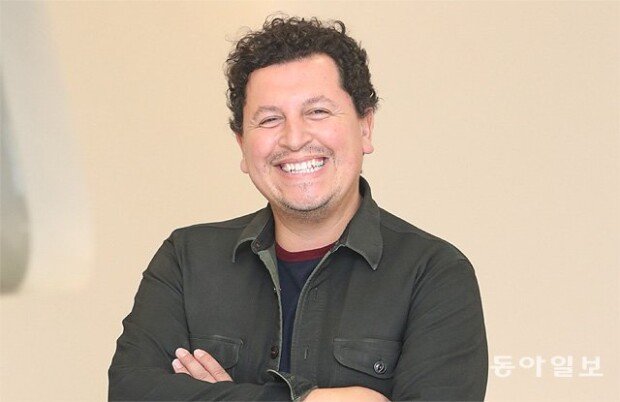Prof. Ronald Rael installs seesaws along U.S.-Mexico border wall
Prof. Ronald Rael installs seesaws along U.S.-Mexico border wall
Posted October. 31, 2019 07:55,
Updated October. 31, 2019 07:55

Rare laughter was heard from the tall grey metal wall along the U.S.-Mexico border on September 28. It was because of pink seesaws installed along the border wall, which has been a source of tragedy. Children from the U.S. and Mexico gathered along the border to play on the seesaws. Residents of the separated countries communicated with one another through gaps between the fence.
It was Ronald Rael, an architecture professor at the University of California, Berkeley, who led the project. He has garnered attention for publishing a book titled “Borderwall as Architecture” and presenting a concept of “bilateral seesaws” during his TED speech. He is visiting South Korea to deliver a speech at SDF2019 to be held at Dongdaemun Design Plaza in Seoul on Thursday.
“U.S. President Donald Trump is pursuing a policy to build more walls along the border, but the immigration issue is increasingly getting worse,” said Professor Rael during an interview with the Dong-A Ilbo on Wednesday. “I opted for creative design and play to show how futile the border walls are.”
“Seesaws remind both adults and children of the concept of how one side’s actions can have direct impact on the other side. They only work when you and a person sitting on the other end embrace generosity to take turns to go up and down. I wanted to deliver a message on equality and inequality, as well as relationships with neighbors.”
Professor Rael has been expressing architectural ideas about border walls full of joy, fun, and harmony in drawings and eventually realizing such ideas for the past 10 years. He built swings that travel back and forth between the wall and volleyball fields with the border wall functioning as a net. He also led projects that allowed residents of the two countries, though divided the wall, to share meals and enjoy music and movies together along the border.
The Dong-A Ilbo asked him about the ideas to reduce tensions along the Korean Demilitarized Zone (DMZ), which teeters with much more intense and deeper military tensions.
“In one section of the border, another wall was later added to an existing one. Two walls meant further distance so people used hand signals from apart, saw each other with telescopes, and communicated with the help of English-Spanish interpreters. Ironically, the DMZ’s natural environment is well protected thanks to the separation. I think the two Koreas can jointly engage in efforts to protect and study the area’s natural environment to reduce tensions, and eventually reach a point where the DMZ can be removed.”
Seung-Hoon Cheon raphy@donga.com







